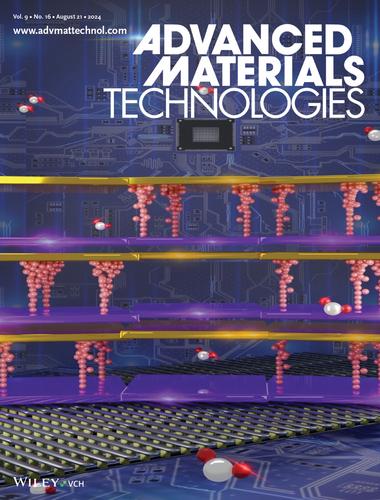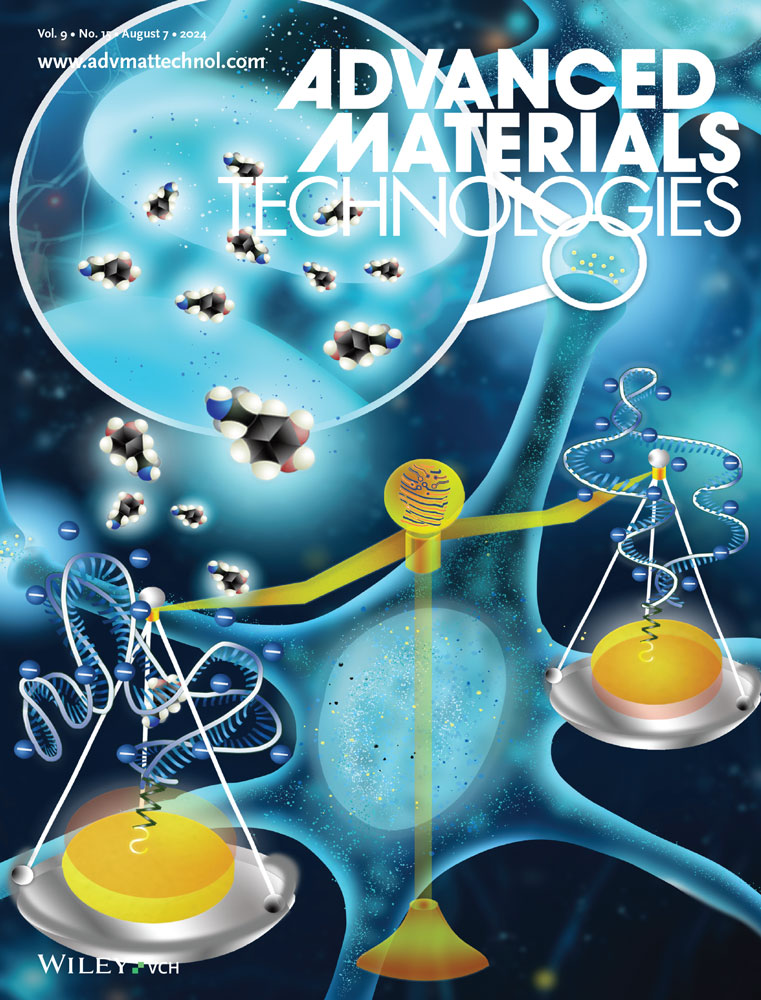用于电阻式随机存取存储器的原子层沉积薄膜(Adv.)
IF 6.4
3区 材料科学
Q1 MATERIALS SCIENCE, MULTIDISCIPLINARY
引用次数: 0
摘要
原子层沉积薄膜电阻式随机存取存储器(RRAM)是一种前景广阔的技术,因为它易于操作、速度快、价格低廉且稳定,尤其是在纳米级器件尺寸上。在编号为 2301762 的文章中,Robert Zierold 和其他研究人员展示了原子层沉积技术因其控制氧空位的能力而成为制造 RRAM 的理想技术,并实现了多层堆叠,有望应用于信息存储和神经网络。本文章由计算机程序翻译,如有差异,请以英文原文为准。

Atomic Layer Deposition Films for Resistive Random-Access Memories (Adv. Mater. Technol. 16/2024)
Atomic Layer Deposition Films
Resistive random-access memory (RRAM) is a promising technology because of its ease of operation, high speed, affordability, and stability, particularly at nanoscale device sizes. In article number 2301762, Robert Zierold an o-workers show that atomic layer deposition is ideal for RRAM fabrication due to its ability to control oxygen vacancies and enables multiple-layer stacking, with potential applications in information storage and neural networks.
求助全文
通过发布文献求助,成功后即可免费获取论文全文。
去求助
来源期刊

Advanced Materials Technologies
Materials Science-General Materials Science
CiteScore
10.20
自引率
4.40%
发文量
566
期刊介绍:
Advanced Materials Technologies Advanced Materials Technologies is the new home for all technology-related materials applications research, with particular focus on advanced device design, fabrication and integration, as well as new technologies based on novel materials. It bridges the gap between fundamental laboratory research and industry.
 求助内容:
求助内容: 应助结果提醒方式:
应助结果提醒方式:


